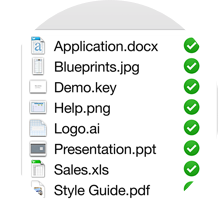
How to Access the Deep Web and the Dark Net. Online Storage or Online Backup: What's The Difference?. Time Machine vs Arq vs Duplicati vs Cloudberry Backup. A second test proved more successful, which led to the San Jose experiment. Testing began at Dropbox's two Dallas Fort Worth datacenters, and initially things were less than smooth – due to the team not realizing all of its S3 proxies were running from the datacenter it took offline. It started by implementing a dedicated disaster recovery team, which rebuilt Dropbox's failover-handling software before running tests, of which the November 2021 shutdown was part. Failing over and overĪ May 2020 failover tooling failure caused a 47-minute long service outage, which pushed Dropbox into high gear on improving its disaster recovery systems. "These choices severely limited our architectural choices when designing an active-active system, and made the resulting system much more complex," Dropbox said. It said this was necessary to implement its plan because of limitations imposed by how Dropbox itself chose to manage metadata. AWS power failure in US-EAST-1 region killed some hardware and instancesĭropbox ultimately settled on an active-passive failure model, which still replicates blocks across multiple datacenters, but only serves files from a single location. Azure Site Recovery points now live for 15 days in case undetonated ransomware lurks. Dunno about you, but we're seeing an 800% increase in cyberattacks, says one MSP. OVHcloud datacenter 'lacked' automatic fire extinguishers, electrical cutoff. This is known as an active-active system because multiple nodes are serving files to users simultaneously. The first attempt Dropbox made to eliminate its centrality was called Magic Pocket, a system that distributes block data to multiple datacenters, which can serve portions of files at the same time, without worries about a single datacenter outage eliminating service. 
"Given San Jose's proximity to the San Andreas Fault, it was critical we ensured an earthquake wouldn't take Dropbox offline," the company said.

What was Dropbox thinking?Īfter parting ways with previous hosting service AWS and building its own datacenters, Dropbox said it realized there was a problem: its metadata was highly replicated, but block data wasn't. According to the company, RTOs were reduced from eight to nine minutes down to four or five.






 0 kommentar(er)
0 kommentar(er)
